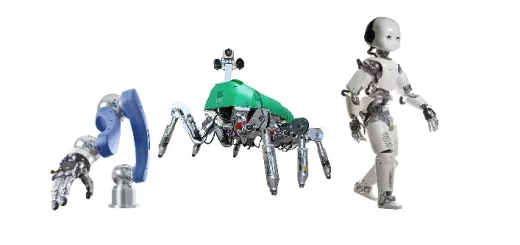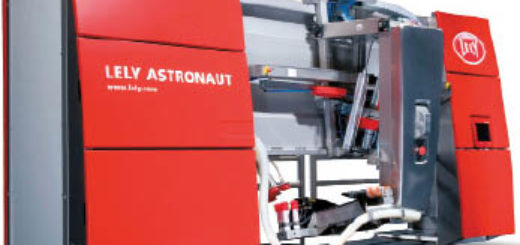Robotic process automation (RPA), RPA robots uses, importance and features
Robotic Process Automation (or RPA) enables anyone to configure the robot or computer software to emulate & integrate the actions of the human interacting within digital systems to execute the business process, RPA robots use the user interface to capture the data & manipulate the applications as humans do, They can interpret, trigger responses and communicate with the other systems to perform on a vast variety of repetitive tasks.
Robotic Process Automation
RPA system is the use of specialized computer programs, known as software robots, to automate and standardize repeatable business processes, although RPA system does not involve any form of physical robots, software robots can mimic human activities by interacting with the applications in the same way that the person does.
Robotic process automation (RPA) software utilizes bots to automate routine tasks within software applications, RPA systems are used to save time & eliminate the need for human employees to conduct time-consuming, repetitive and tedious tasks, RPA software is most commonly used in finance and operations, sales, and supply chain departments.
RPA systems include artificial intelligence, usually, computer vision for training the bot agents in virtual environments or general machine learning to improve bot decision-making, The products within the RPA category contain analytics features and a central platform for maintaining and controlling all the bots deployed across a company.
Robotic process automation works as a virtual assistant, bots complete various tasks, It can free up time for the employees to concentrate on more interesting, revenue-generating tasks for an organization, Part of the beauty of robot process automation technology is that non-technical employees will have the tools available to configure their software robots to solve their automation challenges.
RPA is based on the notion of software robots or artificial intelligence (AI) workers, RPA robots develop the action list by watching the user perform that task in the application’s graphical user interface (GUI), and perform the automation by repeating the tasks directly in the GUI.
Robotic Process Automation advantages
Robotic process automation can capture & interpret the applications for processing the transaction, manipulating data, triggering responses and communicating with the other digital systems, RPA can generate an automatic response to an email, It can deploy thousands of bots, each programmed to automate jobs in an ERP system.
It allows business professionals to configure software robots to automate repetitive, routine work between multiple systems, These bots work directly across the application user interfaces, mimicking the actions the person could perform, such as logging in & out of applications, copying & pasting data, opening emails and attachments, and filling in forms.
RPA robots enable organizations to automate at a fraction of the cost & time previously encountered, They can move files & folders, they can extract structured & semi-structured data from documents, scrape browsers, and more, The RPA software robot never sleeps, it makes zero mistakes and it costs a lot less than an employee.
RPA systems can reduce staffing costs & human error, Bots are low-cost & easy to implement, requiring no custom software or deep systems integration, RPA system is used for software tools that partially or fully automate human activities that are manual, rule-based, and repetitive, It can perform tasks such as data entry, process standard transactions, or respond to simple customer service queries, RPA tools do not alter existing systems or infrastructure.
RPA tools are not replacements for the underlying business applications, they automate the already manual tasks of human workers, Robotic process automation frees humans from monotonous, low-value-added tasks like data entry and makes them available for higher-value tasks that require human creativity, ingenuity, and decision making, It helps to ensure that tasks can be completed more quickly because the RPA tool can find & retrieve any necessary data in the background.
RPA system is a user-friendly & cost-effective tool, Programming skills are not necessary to configure the software robot, due to the primarily code-free technology, any non-technical staff can use a drag-and-drop process designer to set up a bot—or even record their steps to automate a process through a process recorder feature.
The operations can be performed 24/7 as these bots can work tirelessly and autonomously without requiring staff to manually trigger bots to initiate business processes, RPA involves no disruption to underlying systems, Any company will boost its capabilities and save money & time with robotic process automation software, RPA system can improve service desk operations & monitoring network devices.
Machine learning & artificial intelligence will enable bots to more intelligently interpret the interfaces they work across, better handle errors, and manipulate unstructured data, Machine learning enables bots to recognize patterns over time, So, when the process requires human intervention, the bot learns and acts autonomously when the situation happens again.
Bots help workers to offload manual tasks like filling out forms, data entry and looking up information from websites, so workers can focus on strategy and revenue-producing activities, They are less prone to making mistakes or typos than the human worker, They only follow the instructions they have been configured to follow & provide an audit trail history for each step, if steps in a particular process need to be reviewed, bots can play back their past actions.
RPA system is a versatile, scalable technology that can be applied to many different departments and industrial processes, It applies to routine processes, RPA system can be applied as a personal productivity tool, The employees can access to a self-serve automation tool that will empower them to reduce their tedious work, RPA system can be made available to a wide range of employees and would not need to involve a resource-intensive, enterprise-wide scale deployment effort.
Robotic Process Automation disadvantages
RPA system can’t be used for every enterprise, As with any automation technology, RPA system has the potential to eliminate jobs, Installing many bots has taken a lot longer and it is more complex & costly than most organizations have hoped it would be, The platforms on which bots interact often change, and the necessary flexibility isn’t always configured into the bot, a new regulation requiring minor changes to an application form could throw off months of work in the back office on a bot that’s nearing completion.
The robotic process automation tool has to be scripted/programmed to perform a repetitive task, To do that a subject matter expert (SME) who understands how the work is done manually must be employed to map out those steps, The data sources & destinations should be highly structured and unchanging, RPA tools can’t deal with quirks, errors, or exceptions.



